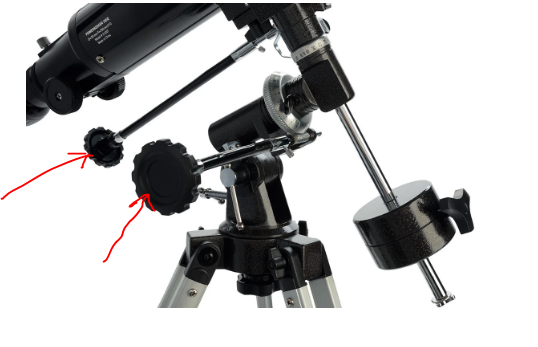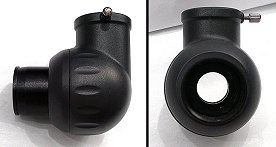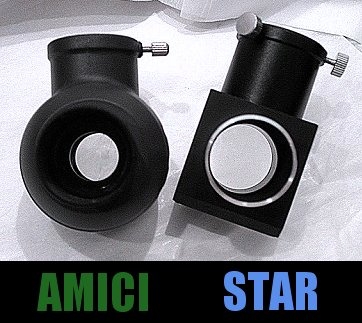
Starbuddypal
-
Posts
19 -
Joined
-
Last visited
Content Type
Profiles
Forums
Gallery
Events
Blogs
Posts posted by Starbuddypal
-
-
On 22/11/2020 at 02:35, Kyle Allen said:
This is how I find the Andromeda Galaxy...
First find the Great Square in Pegasus. Then, from the north eastern corner, hop to Mirach. One step from Mirach to Mu Andromedae and another step in the same direction takes you to M31.
If you’ve got a pair of binoculars, they should easily show a bright oval patch of light. This is just the core of the galaxy. Dark skies are required to see the full extent of it.
I started at Alphetatz and worked my way up and around to M32, M31. Coolest blurry image ever.
-
 2
2
-
-
I live out in rural Florida and the skies look great. I tried looking at the Orion Nebula too and that looked cool. At least I’m pretty sure that was it.
-
Last night I decided to try finding the Andromeda Galaxy with my Celestron Powerseeker 70EQ with a GSO 1.25" SuperView Eyepiece - 20mm. To find it I used an app called Starwalk and located the Andromeda constellation. Next I followed the Andromeda constellation slowly with my telescope and reached the end where the Andromeda Galaxy is. I think I saw it because I saw a blurry image in the area where it should be at the end of Andromeda and I can't think of any other explanation for a blurry image in the shape of a galaxy in that area of the constellation. My eyepiece doesn't give me any detail except for looking at the Moon. Of course I would love to see more detail but I'm not quite there yet with the right eyepieces.
-
 1
1
-
-
On 18/11/2020 at 02:24, Kyle Allen said:
A 6mm and 2x Barlow will give you an effective 3mm, which will be too high magnification for your telescope. You can either get a short focal length eyepiece or Barlow a medium focal length eyepiece, which has the benefit of giving you two effective focal lengths and increased eye relief.
Keep trying though because seeing detail on the planets depends mostly on the seeing conditions, which vary night to night. Observing as often as you can will allow you to take advantage of any nights where the seeing is good.
and combined that with my GSO 1.25" SuperView Eyepiece - 20mm....would that be suitable?
I'm also leaning toward these two:
-
It's certainly frustrating trying to look at Mars and Jupiter and just seeing a bright dot with no discernable features. I have an app to help me find everything. Objects like Neptune and Uranus are hard to find even if I use my app. I can identify the general area where some things like Neptune are but finding those are difficult. I never got a star diagonal I have been meaning to get one. Nebulas and galaxies I haven't even tried looking at because I just figure I won't be able to see them.
I forgot to mention that I got my telescope at a Goodwill and it had no eyepieces. The GSO 1.25 lens I purchased separate since I didn't have any eyepieces to begin with. From what everyone is saying I should get a lens with 6mm or something low in that range AND a 2x barlow lens?
-
I have a Celestron Powerseeker 70EQ with a GSO 1.25" SuperView Eyepiece - 20mm. I attached photos I took with my iPhone. I can’t see details of Mars and Jupiter but I can see the moons of Jupiter. I can see Saturn easily due to the rings but no details. Do I need to upgrade my lens so I can see better details or am I just doing something wrong? I’m still somewhat new to this.
-
 1
1
-
-
-
13 hours ago, Alan64 said:
Yes, I'd get that holder shimmed, there at its front. You'll be amazed at how much easier it will be to adjust.
Jacksonville is at 30°, here in the northern hemisphere. Therefore, Polaris will appear in the north part of the sky 30° above the horizon...
When aligning your EQ-1 mount, for tracking objects, you want to set the latitude-scale to 30°...
The setting-circles, one for each axis, with numerals all round, are pretty much useless. It is assumed that one would dial in the coordinates of object with those circles, but the ones provided with our EQ-1 mounts are not up to the task. I have the next size up in an equatorial mount, an EQ-2. I replaced the numbers on its setting circles with clowns...
That's about how useful they are.
Now, once you set the latitude-scale to 30°, that's it. You'll never have to touch it again, unless you relocate a considerable distance to the north or south. Miami is at 25°, therefore you would need to change it to that if you relocated there.
Once it's set, you take the kit outside and aim the body of the RA-axis towards Polaris...
You will need to level the mount, with its retractable legs, then loosen the mount-head under the tripod's hub, and aim the RA-axis at Polaris. You don't need to adjust the latitude-scale again, as it's already set to 30°. Once the RA-axis is pointed at Polaris, tighten the mount-head's clamp, unclamp both axes, and revolve the telescope round and about the sky, like a gyroscope(for the lack of a better analogy)...
Once you find an object, you center it in the eyepiece, lock both axes, and use the slow-motion controls to track the object. You'll get the hang of it with practice.
At 1:00 AM the sky was finally clear and I could see Mars with the naked eye so I tried out the telescope and I finally saw a celestial body. Mars looked great in the eyepiece. I mean I couldn't see much detail but I could still see that it was Mars. I'm going to try Polaris and adjusting it to what you said. I think I'm getting the hang of this.
-
 2
2
-
-
On 09/09/2020 at 03:24, Alan64 said:
Your telescope, a 70mm f/10 achromat, has a focal-length of 700mm. That's what you use to choose your eyepieces. The 20mm "SuperView" has a power of...
700mm ÷ 20mm = 35x
That's a fairly-low power, and not too difficult with which to see Jupiter. Your telescope has a finder-scope, just like this one that came with my own "PowerSeeker" kit...
I found it to be not a bad little finder. It's a 5x25, the front lens 25mm in diameter, and the magnification at 5x. You will need to set up the telescope during the day. Locate a tall object towering in the distance, a half mile to a mile away. Use the 20mm eyepiece to aim the telescope at a feature of the object, like a mast or a flag, anything. Once you get that feature centered in the eyepiece, lock the telescope in that position so it won't move. Then, adjust the finder-scope to aim at that same feature of the object. To make the finder easier to adjust, shim its holder...
...and for a tighter fit. I had to shim mine, and it's a safe be that you will need to as well. You can use blue painter's-tape from Dollar Tree, and about two, three or four layers round. You want the front part of the holder to hold the scope firmly, stiffly even. That makes it so much easier to adjust with three screws at the back.
Once you get what the finder sees aligned with what the telescope sees, you're golden, and you can then use it to find most anything in the sky. Once an object is located in the find, you look into a low-power eyepiece and you should see the object. When aligning the two to each other, if you use a higher-power eyepiece, like a 9mm or shorter even, the finder will be that much more accurate.
If there are no objects in the distance during the day, there is one you can use at night: Polaris, the North Star. I don't know where in Florida you live, and therefore your latitude. Florida's latitudes vary from 25° to 31°. I live just south of Memphis. My latitude is 34° to 35°, therefore Polaris is 34 or so degrees up from the horizon...
0° is at the horizon, the ground, the dirt. Straight up in the sky is the zenith, and at 90°. Therefore, Polaris is a little over a third of the way up, between the horizon to the zenith.
Polaris appears a bit small in the sky, but it's far larger than the Sun...
Polaris Aa is the star you can see in the sky with just the eyes.
Polaris doesn't move. Well, it moves, but in such a tight circle that it's very difficult to tell that it's moving. Polaris does not move across the sky like the Sun, the Moon, the planets and the stars, so you can use it to align the finder to your telescope. You will need to align the two before you start hunting for objects.
Eventually you may want a barlow, a 2x, and to reach the higher powers where the planets become exciting to look at. I've had my own 70mm f/13 up to 150x, and even 225x, trained on Polaris.
With a 2x-barlow, you can convert your new 20mm wide-angle eyepiece into a 10mm wide-angle, and for a power of 70x. If you insert the barlow into the telescope first, then the diagonal and eyepiece, the 2x will simulate a 3x-barlow, and the 20mm will simulate a 6.7mm eyepiece(104x). To reach 150x...
700mm ÷ 150x = a 4.7mm eyepiece
Combining a 2x-barlow with the 9mm = a 4.5mm(156x)
Combining a 3x-barlow(simulated) with a 12mm = a 4mm(175x), and so on and so on...
Back to the finder, if you find that you don't like the one that came with the telescope, you can get a red-dot finder and give that a whirl. For example...
https://agenaastro.com/celestron-star-pointer-finderscope-51630.html
That's what I was thinking. I was trying the finder scope that night but since I'm so new to this I wasn't exactly sure what I was doing. I think I have a better idea on what to do now. It's been cloudy these passed couple of nights so I haven't been able to use it at night. I live in North Florida near Jacksonville.
-
3 minutes ago, Starbuddypal said:
My GSO 1.25" SuperView Eyepiece - 20mm came in the mail today. I wasn't sure if it would work yet for what I have or lack thereof. I have not purchased a star diagonal yet. In the upper right corner you can see Jupiter as a blurry pale white dot. I was trying to look at that since it was the brightest object but I couldn't find it in my eyepiece. I use an app to find the positions of the planets and stars.
I need a barlow lens right?
-
My GSO 1.25" SuperView Eyepiece - 20mm came in the mail today. I wasn't sure if it would work yet for what I have or lack thereof. I have not purchased a star diagonal yet. In the upper right corner you can see Jupiter as a blurry pale white dot. I was trying to look at that since it was the brightest object but I couldn't find it in my eyepiece. I use an app to find the positions of the planets and stars.
-
 1
1
-
-
23 hours ago, Alan64 said:
I've found Agena Astro to be a very good source for accessories...
https://agenaastro.com/eyepieces/1-25-eyepieces/shopby/gso_plossl-gso_superview.html
The 20mm "SuperView" would work very well with the telescope.
Plossls are the minimum in performance-eyepieces, and a great value. Again, no shorter than 9mm; you can barlow a 9mm for a simulated 4.5mm... https://agenaastro.com/meade-series-4000-126-1-25-2x-short-focus-barlow-lens.html
A prism-star-diagonal... https://www.highpointscientific.com/celestron-1-25-90-prism-star-diagonal-94115-a
A mirrored-star, however I've read of one instance where the user had to collimate, shim, the mirror within...
https://agenaastro.com/gso-1-25-90-refractor-mirror-star-diagonal.html
EBay is a source for other types of eyepieces, diagonals and barlows, for less in many cases...
Some, if not many, of those have a plastic lens or two. I suggest that the star-diagonal to be had elsewhere.
Okay so I am leaning toward getting the GSO 1.25" SuperView Eyepiece - 20mm along with the Celestron 1.25" 90º Prism Star Diagonal - 94115-A from agenaastro.com. The telescope I bought was priced at $25 so buying those pieces would basically bring it up to around the normal retail price of the telescope once added all together.
-
 1
1
-
-
-
10 hours ago, Philip R said:
Hi @Starbuddypal and welcome to SGL.

This series of eyepiece... https://www.firstlightoptics.com/bst-starguider-eyepieces.html are popular some SGL’ers for very little money/outlay or there are these... https://www.firstlightoptics.com/vixen-eyepieces/vixen-npl-eyepieces.html
There are other brands available, and it does not necessarily have to Celestron. As long as it is 1.25” you will be doing ok.
This is the only thing my Celestron has. Do I need to get a new one of these for looking at stars/planets or could I just get one of those eye pieces and attach it to what I have?
-
10 hours ago, Alan64 said:
This is what came with the kit...
I have that same 4mm from a Celestron "AstroMaster" 70EQ. I like it a lot. The 3x-barlow pictured there is junk. I also got the same diagonal within your image...
That's an Amici, correct-image diagonal. It's best for daytime/terrestrial use; birds in trees, ships at sea, that sort of thing. It can be used at night, but on brighter objects you may see the Amici-line; an illuminated streak across the object...
For use at night, you may prefer a STAR-diagonal; for example...
https://www.rothervalleyoptics.co.uk/celestron-90-degree-star-diagonal-125.html
The light-port of the Amici(left) compared to that of the Star(right)...
That of the Star being ideal for illuminating your eyepieces at night.
In so far as eyepieces, Plossls offer great value for the outlay, but don't choose a Plossl shorter than 9mm; for examples...
https://www.firstlightoptics.com/celestron-eyepieces/celestron-omni-plossl-eyepiece.html
To reach the higher powers, you might prefer a barlow; for example...
https://www.rothervalleyoptics.co.uk/antares-x2-achromat-fmc-barlow-lens-125.html
Incidentally, you can convert a 2x-barlow into a 3x by placing the 2x into the refractor first, then the diagonal and eyepiece into the barlow. It's actually more ergonomic that way.
This is the only eye piece (diagonal?) it has. So the kit you said came with 3 eye pieces so basically I do need to find an eye piece or 2 or 3.
I mostly want to use it for the Moon, Saturn and Jupiter and not for daytime use. So I will look for a STAR diagonal and go from there. -
-
I purchased a Celestron Powerseeker 70EQ at a Goodwill thinking it was a great find for my first telescope. I get home and realize that it may be missing an eye piece. I'm unsure what else it is missing though. Where can I go to get the missing eye piece for this telescope? I don't know anything about telescopes so I'm not sure where to go or what else I will need or what else could be missing. I attached an image of it with what I think is missing.
-
 1
1
-
-
I'm trying to get a photo of Jupiter and Saturn with my Nikon D3000 DSLR but I can't get anything clear. I attached the kind of photos I'm getting with my camera. They end up being too bright and no distinguishable features show up. Is it even possible for my Nikon to get photos of planetary objects like Saturn and Jupiter?






























My new pieces and how to use them
in Getting Started Equipment Help and Advice
Posted
I have a Celestron Powerseeker 70EQ with a GSO 1.25" SuperView Eyepiece - 20mm. I recently got a Celestron Omni 2X Barlow lens and a Celestron zoom 8mm-24mm. What is the best use out of these three to view celestial objects? I’m trying to view Jupiter and Saturn and Mars but still figuring out which to use to see features (if that’s possible with what I have anyway)